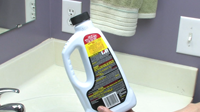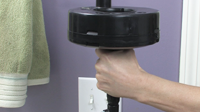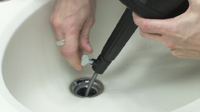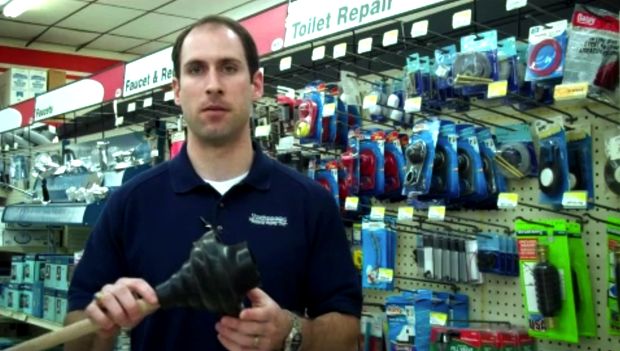You don't the permission to view this video
If your sink drain gets backed up, you probably reach for the liquid drain cleaner to solve the problem. But if that doesn’t work, what do you do? Watch this video to find out some other tried and true methods of unclogging a sink drain.
Unfortunately, a slow drain usually isn’t the type of problem that just goes away on its own. Sooner or later you have to fix it. While clearing all that mess out of the drain isn’t a pleasant task, there are several ways you can try to fix the problem yourself before calling a professional.
There are of course many different types of chemical drain openers that will work on drains in kitchen sinks, bathroom sinks and bathtubs. If you try any of these chemical cleaners, please be sure to read and follow all instructions on the packaging carefully.
Here, I’ll discuss a few other, non-chemical ways to address the more serious clogs in the drain.
Whatever method you choose, you’ll find the products and tools you need at your local independent home improvement retailer. The staff there will be happy to answer any of your questions.
We’ll start with the simplest method of clearing a drain in the bathroom sink. If a drain is completely clogged and no water will go down, first try removing the pop-up drain.
The pop-up is attached to a pivot rod behind the drain. First loosen the nut attached to the drain and remove the pivot rod. Now you can remove the pop-up. This often collects hair, which creates a clog.
The next thing you can do is to try a simple suction cup plunger. Be sure to leave the pop-up out but replace the pivot rod and tighten the nut. This is so water won’t leak out.
Let hot water run until it is about 2 inches deep in the sink. The water helps form a seal for the plunger, which you will place directly over the drain. Pump the plunger several times to try to remove the clog.
If that does not work, try an auger, also called a drain snake. These have a handle that spins the wire shaft and a blade at the other end that breaks up the clog.
To use it, push the auger through the drain as far as you can until it reaches a block. Then, tighten the thumbscrew and rotate the handle. The auger should begin to work its way through the pipe and break up any blockage. You may have to repeat this several times.
Another way of cleaning out the drain is to take apart the trap. Underneath every sink and tub is a trap (like this one) that holds water to prevent sewer gasses from coming up through the drain and into the house. This is often the place where a clog occurs, and it’s pretty easy to remove and clean out. Just loosen the slip nuts at both ends of the trap using a pair of channel locking pliers, then remove the trap from the drain assembly and clean it out if necessary.
For tough clogs, you may have to remove the trap to feed the auger in through the drain coming out of the wall rather than make it bend around the trap.
You can use these same tools for clearing out a clog in the bathtub, the kitchen sink or a utility sink. More than likely, one of these methods will remove the clog. However, if these methods do not work, check with your local independent home improvement retailer to see what other tools or products may be available.
If you have questions about this or any other home improvement project, be sure to read our list of Frequently Asked Questions for this video. And be sure to print out our Project Instructions, which includes a Tools and Materials checklist, before visiting your local independent home improvement retailer. That’s where you’ll find all the products and helpful advice to complete your project. If you’re not sure where to find your local store, check out our Store Locator.
Good luck with your project and thanks for watching.
Steps
- 1.

Try using a simple drain cleaner to see if this fixes the problem.
- 2.

Detach the sink plug from the pivot rod under the sink.
- 3.

Take out the the sink plug and remove any foreign material from it.
- 4.

If the clog remains, use a plunger. Reattach the pivot rod (without replacing the sink plug).
- 5.

Fill the sink with some water (if needed) to create a seal for the plunger and plunge the drain a few times.
- 6.

If that doesn't work, use an auger/drain snake.
- 7.

Push the auger through the drain until it reaches the clog.
- 8.

Tighten the thumb screw and rotate the top handle. This should push through the clog. May need repeating.
- 9.

Not working? Check the drain trap.
- 10.

Place a container for catching water under the drain. Remove the trap and clean out if needed.
- 11.

For tougher clogs, use the auger/drain snake in the pipes.





Don’t use drain cleaner if you have cheap plastic pipes or a garbage disposal. It will eat right through the pipes and can destroy a disposer.